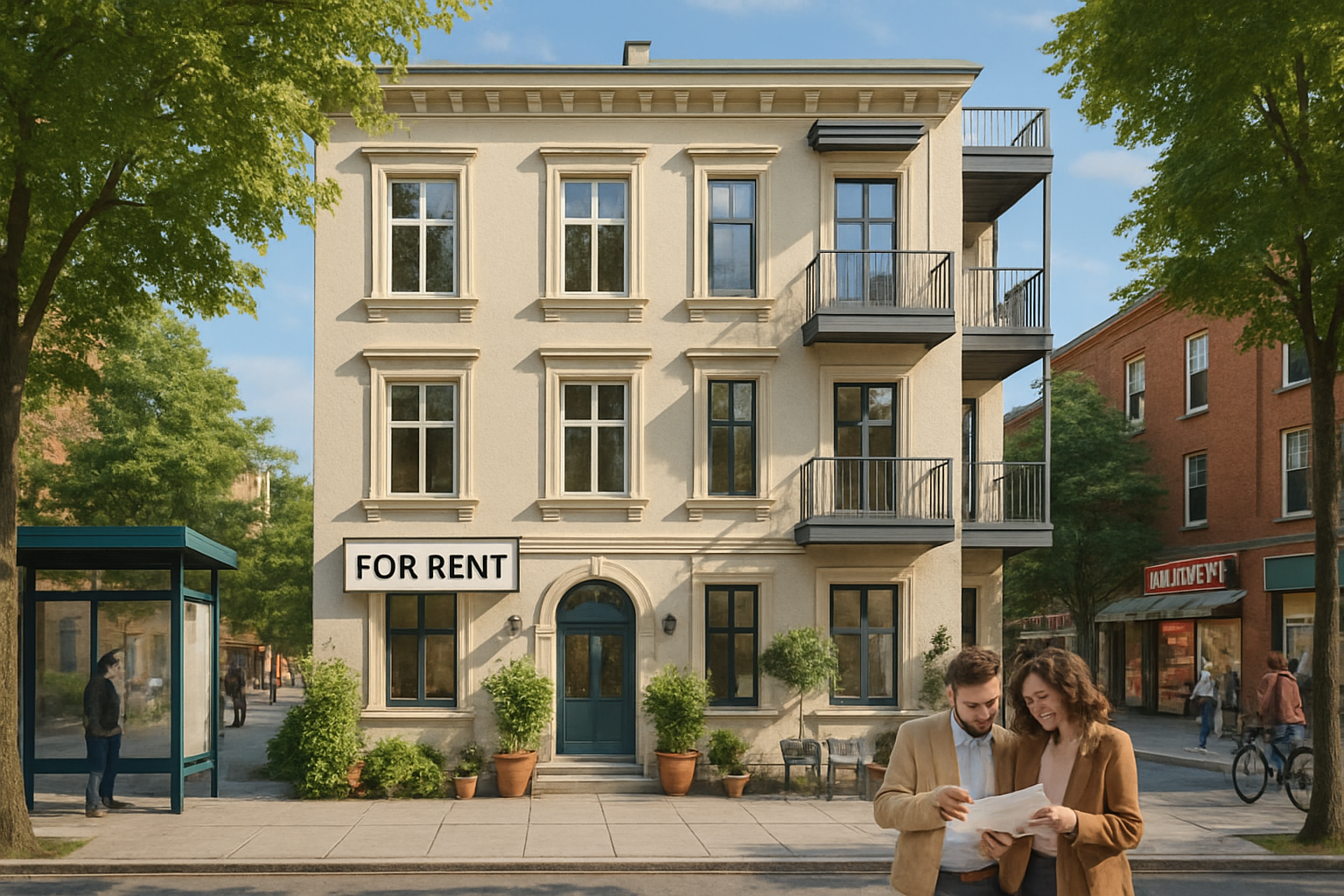Many people are concerned about taking out a large "loan," or loans, when they hear about real estate investment. For many people, borrowing is perceived as "debt" and something to be avoided as much as possible. But what if that common sense is actually missing out on a great opportunity for asset building?
In this article, INA & Associates, Inc. explains a new way of thinking about borrowing in real estate investment, which is to view borrowing not merely as a "liability" but as "capital" to dramatically expand your assets. This shift in perspective is the key to success in real estate investment. By maximizing the leverage effect and properly managing risk, borrowing can be your most powerful weapon in building your wealth. By the end of this article, your perception of borrowing will have changed 180 degrees, and you will have the confidence to take a new step toward real estate investment.
Why is borrowing considered a "liability"?
To begin with, why do so many people view borrowing as "debt" and have a negative image of it? The reason is rooted in the accounting definition and our everyday financial perceptions.
In the accounting world, a liability is defined as "an obligation to relinquish or deliver economic resources controlled by a particular entity as a result of a past transaction or event. In layman's terms, it is "money that must be repaid in the future. This definition is the underlying concept behind the balance sheet, which evaluates the financial condition of a company.
| Item | Description |
|---|---|
| Assets | Assets owned by the company (cash, buildings, land, etc.) |
| Liabilities | Money owed in the future (loans, accounts payable, etc.) |
| Net Assets | Assets minus liabilities; net assets |
This formula "assets = liabilities + net assets" is an important indicator of corporate health. Generally, the lower the ratio of liabilities, the more financially stable the company is considered. This thinking has influenced our personal financial perceptions and formed the image of "debt = bad".
However, if we apply this common sense directly to real estate investment, we may misunderstand the true nature of the situation. Borrowing in real estate investment is not just money to be consumed, but also an investment to generate new income, in other words, it has an aspect of functioning as "capital.
Change of mindset: "Borrowing" in real estate investment is "capital
In the world of real estate investment, the strategic use of borrowing, or other people's capital, makes it possible to invest on a scale that would be impossible to achieve with one's own funds alone. This is what is known as the leverage effect. It is like the principle of leverage, in which a small amount of power (one's own capital) is used to move a large object (income-producing property).
The Power of the Leverage Effect
Let's compare the impact of the leverage effect in the following case study.
Case Study: Real Estate Investment with 10 Million Yen of Own Funds
| Item | Case A: Own funds only | Case B: Using borrowings |
|---|---|---|
| Self-financing | 10 million yen | 10 million yen |
| Borrowings | 0 yen | 90 million yen |
| Purchase Property Price | 10 million yen | 100 million yen |
| Annual rental income (surface yield 5%) | 500,000 yen | 5 million yen |
| Annual loan repayment (interest rate 2%, 35 years) | 0 yen | Approx. 3,420,000 yen |
| Annual cash flow (before tax) | 500,000 yen | 1.58 million yen |
| Return on equity (ROI) | 5.0% 5.0 | 15.8% (*Expenses are not taken into account for simplification. |
*Expenses are not considered for simplification.
As this chart clearly shows, in Case B, the use of borrowing more than triples the annual cash flow and dramatically increases the return on equity (ROI) from 5.0% to15.8%. This is the power of viewing debt as "capital. By leveraging other people's capital, you can dramatically accelerate the speed of asset building.
Asset Expansion as Seen on the Balance Sheet
Let's look at this process of asset expansion in terms of a balance sheet. Before and after the purchase of the property, your asset composition will change as follows.
Balance sheet before property purchase
| Assets | Amount | Liabilities and Net Assets | Amount |
|---|---|---|---|
| Cash | 10 million yen | Liabilities | 0 yen |
| Net Assets | 10 million yen | ||
| Total Assets | 10 million yen | Total liabilities and net assets | 10 million yen |
[Balance sheet after purchase of property worth 100 million yen
| Assets | Amount | Liabilities and Net Assets | Amount |
|---|---|---|---|
| Real estate | 100 million yen | Borrowings | 90 million yen |
| Net Assets | 10 million yen | ||
| Total Assets | 100 million yen | Total liabilities and net assets | 100 million yen |
Immediately after the purchase, the amount of net assets does not change, but total assets expand from 10 million yen to 100 million yen at once. Then, as you repay the loan from the rental income, your borrowings (liabilities) will steadily decrease, and your net assets will increase by that amount. In other words, your tenants repay the loan on your behalf, increasing your assets.
Investment strategy to utilize "debt" as "equity
In order to maximize the use of debt as "capital," several important strategies and risk management are essential. It is not enough to just blindly increase your borrowings.
Yield Gap: The Lifeblood of Profitability
One of the most important indicators for measuring the profitability of a real estate investment is the yield gap. This is the difference between the yield on a property minus the interest rate on the loan.
Yield Gap = Gross Rate of Return (FCR) of the property - Loan Constant (K%)
The absolute requirement for leverage is that the yield gap be positive and as large as possible. If the yield gap is negative, i.e., the interest rate on the loan is higher than the yield on the property, the worst-case scenario of reverse leverage will occur. This is a situation where the more you invest, the more you lose.
[Simulation of yield gap
| Item | Sound investment | Dangerous investment |
|---|---|---|
| Property Yield | 5.0% Yield on properties | 3.0 |
| Borrowing rate | 2.0% 3.5 | 3.5 |
| Yield Gap | +3.0 | -0.5% (reverse leverage) |
Therefore, in making investment decisions, it is extremely important to always be aware of this yield gap and to create a property and financing plan that will ensure stable positive cash flow.
Cash Flow: Source of Stable Management
Along with the yield gap, cash flow, or the flow of cash remaining on hand, is also important. The business plan must generate a positive cash flow after deducting all expenses such as management fees, reserve funds for repairs, property taxes, and loan repayments from rental income.
Cash flow provides the strength to overcome unexpected repairs and periods of vacancy. Even if there is a profit on the books, if the cash flow is negative, the cash flow will eventually fail. Before purchasing a property, it is always wise to conduct an elaborate cash flow simulation and stress test for various situations.
Risk Management: Inextricably linked to leverage
While leverage amplifies returns, it also amplifies risk. In order to use borrowing as "capital," it is essential to properly understand and address the following risks.
| Type of Risk | Description and countermeasures |
|---|---|
| Interest Rate Rise Risk | The risk that, if a loan is taken out at a floating interest rate, a future rise in interest rates will increase the repayment amount and worsen cash flow. Countermeasures: Select a fixed interest rate, conduct simulations in anticipation of rising interest rates, plan for early repayment, etc. |
| Vacancy risk | The risk of not being able to find tenants, resulting in a loss of rental income. Countermeasures: Select an area or property with high rental demand, outsource to a reliable management company, set appropriate rents, etc. |
| Risk of rent decline | Risk of rents falling due to changes in the surrounding environment or deterioration of the building over time. Countermeasures: Determine the future potential of the area from a long-term perspective, maintain property value through regular maintenance and renovation, etc. |
These risks are inherent in real estate investment. However, it is quite possible to minimize their impact by recognizing the risks in advance and taking appropriate countermeasures.
Conclusion
In this article, we have explained a new perspective that views "borrowing" in real estate investment not simply as "debt" that must be repaid, but as "capital" that can accelerate asset building.
- Change of mindset: Borrowings can be "capital" that can generate large returns that cannot be obtained with own funds alone through the leverage effect.
- The Power of Leverage: Leveraging other people's capital can significantly increase return on equity (ROI) and accelerate the speed of asset growth.
- Critical investment strategy: A business plan that ensures a "yield gap" and generates stable "cash flow" is the key to success.
- Thorough risk management: Properly understanding risks such as rising interest rates and vacancies, and taking countermeasures in advance, will ensure a stable investment.
Change the way you look at borrowing and strategically utilize its power. This is what is required of sensible real estate investment in the coming era. Of course, professional knowledge and careful judgment are essential.
If you are seeking more specific advice on borrowing strategies for real estate investment, please do not hesitate to contact us, INA & Associates, Inc. Our professionals have a wealth of experience and expertise and will do their utmost to support your asset building efforts.
Frequently Asked Questions (Q&A)
Q1:What is the minimum amount of personal funds required?
A1:It is difficult to say, but generally speaking, 10-20% of the property price is a good rule of thumb. However, in some cases, depending on the evaluation by financial institutions and personal attributes, it may be possible to start with less personal funds. What is important is to secure not only the amount of personal funds but also sufficient working capital (e.g., for other expenses and immediate maintenance) after the purchase.
Q2:What should I do if interest rates rise?
A2:Rising interest rates are especially important to be aware of if you have a loan with a variable interest rate. Countermeasures include considering "refinancing" to switch part or all of your loan to a fixed interest rate, and if you have sufficient cash on hand, "prepayment" to reduce the amount of repayment. It is most important to have a plan in place at the pre-purchase simulation stage that allows for sufficient cash flow even if interest rates rise by several percent.
Q3:Is it possible for a beginner to invest in real estate using loans?
A3:Yes, it is possible. Rather, it is beginners with limited personal funds who should understand the leverage effect and use it wisely. However, it is dangerous to make decisions on your own without sufficient knowledge and experience. It is strongly recommended to find a reliable real estate company or professional as a partner and receive comprehensive support from property selection to financial planning and post-purchase management.

Daisuke Inazawa
Representative Director of INA&Associates Inc. Based in Osaka, Tokyo, and Kanagawa, he is engaged in real estate sales, leasing, and management. He provides services based on his extensive experience in the real estate industry. Based on the philosophy that “human resources are a company's most important asset,” he places great importance on human resource development. He continues to take on the challenge of creating sustainable corporate value.

.png)












